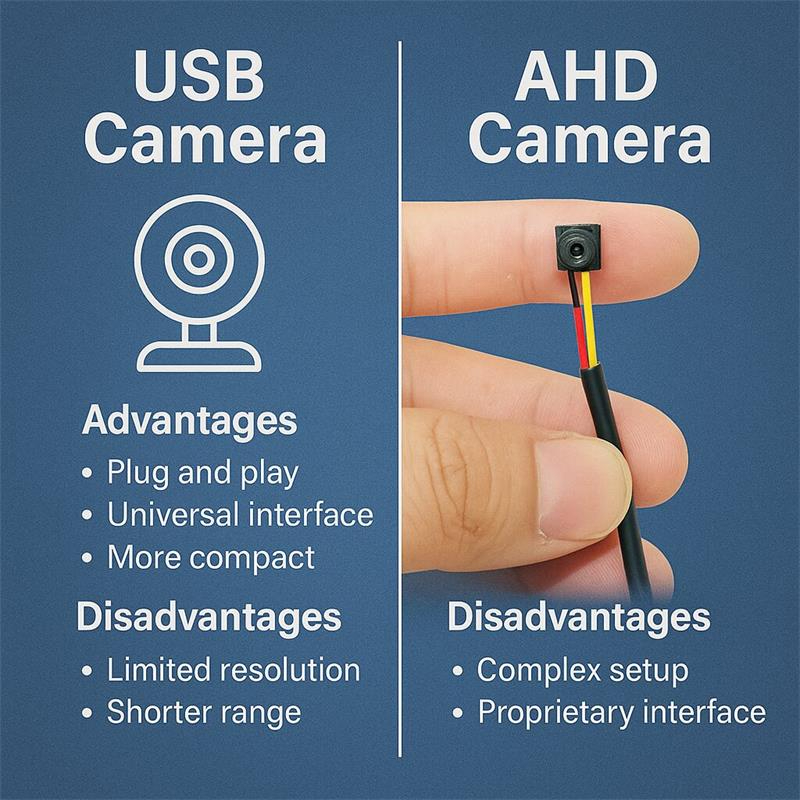
USB Camera VS AHD Camera
Below is a comprehensive technical comparison between USB cameras and AHD (Analog High Definition) cameras, based on their core technologies, performance metrics, installation requirements, and real-world applications. The analysis synthesizes specifications from industrial standards, product documentation, and user implementations 123.
1. Image Quality & Resolution
2. Transmission & Distance
|
Feature |
AHD Cameras |
USB Cameras |
|
Medium |
Coaxial cable/twisted pair |
USB cable (Type A/C) |
|
Max Distance |
500+ meters without signal loss 39 |
3–5 meters (extendable via hubs/repeaters) 2 |
|
Bandwidth |
Fixed bandwidth (no protocol overhead) |
Dependent on USB version: |
|
- USB 2.0: 480 Mbps |
||
|
- USB 3.0: 5 Gbps |
||
|
- USB 3.2/4: 20–40 Gbps 2 |
||
|
Latency |
Near-zero (analog signal) |
50–200 ms (data processing/compression) 10 |
3. Installation & Compatibility
4. Environmental Durability
|
Factor |
AHD Cameras |
USB Cameras |
|
Temperature |
-30°C to +70°C (vehicle/outdoor use) 9 |
Consumer-grade: 0°C–45°C |
|
Weatherproof |
IP66/IP68 (metal housing, anti-corrosion) 39 |
Rarely rated; vulnerable to moisture |
|
Vibration |
Automotive-grade shock resistance 5 |
Not designed for high vibration |

5. Use Cases & Applications
6. Cost & Scalability
Summary: Key Trade-offs
|
Criteria |
AHD Advantage |
USB Advantage |
|
Image Quality |
Superior low-light, zero latency |
High resolution (with compression) |
|
Deployment |
Long-range, harsh environments |
Quick setup, portability |
|
Cost |
Long-term ROI for fixed installations |
Budget-friendly for small-scale use |
|
Integration |
Legacy system compatibility |
Seamless computer/software use |
For automotive/industrial applications (e.g., blind-spot systems, outdoor monitoring), AHD’s robustness and signal integrity are optimal. For desktop/consumer uses (e.g., streaming, tech projects), USB offers simplicity and software flexibility